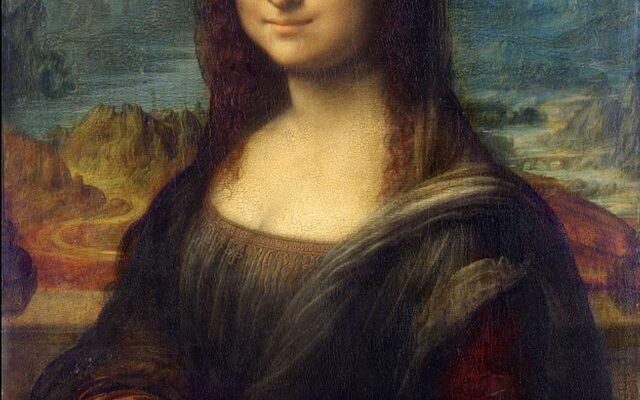
The Mona Lisa has always captivated onlooker. One of the most iconic paintings in the world, Leonardi Da Vinci painted a woman holding a rye smile between 1503 and 1506. The subject of the painting, believed to be Lisa Gherardini, is elegantly posed against a distant landscape with a winding river and distant mountains. Her enigmatic smirk and the intricate details in the background have captivated art enthusiasts, scholars, and the general public for centuries.
Now, researchers have discovered another secret hiding in plain sight of the world’s most famous painting. The foundational layer of oil paint that Leonardo applied to prepare the poplar wood panel for the Mona Lisa seems to have featured a unique chemical composition, distinct from his usual recipes.
By using X-ray diffraction and infrared spectroscopy, a team of scientists in France and Britain has detected a rare mineral compound within the iconic piece. The finding provides fresh insight into how the work from the early 1500s was painted, according to the study recently published in the Journal of the American Chemical Society, according to CNN.
Along with lead white pigment and oil, the compound — known as plumbonacrite — was found in the base layer of the paint. A study published in 2019 had identified the mineral in several 17th-century works by Rembrandt, but researchers had not come across it in works from the Italian Renaissance until the new analysis.
Plumbonacrite forms when lead oxides combine with oil. Mixing these two substances on a palette is a technique that later artists like Rembrandt used to help the paint dry, according to the study. Detecting the rare compound in the “Mona Lisa” suggested that Leonardo could have been the original precursor of this approach, said Gilles Wallez, an author of the latest study and a professor at Sorbonne University in Paris who also was a coauthor on the 2019 report.
“Everything which comes from Leonardo is very interesting, because he was an artist, of course, but he was also a chemist, a physicist — he had lots of ideas, and he was an experimenter … attempting to improve the knowledge of his time,” Wallez said.
“Each time you discover something on his processes, you discovered that he was clearly ahead of his time,” he said.
What sets the Mona Lisa apart is Da Vinci’s revolutionary use of sfumato, a technique that involves subtle transitions between light and shadow to create a three-dimensional, soft-focus effect. This technique is exemplified in the way the subject’s smile seems to change depending on the viewer’s perspective. The painting’s intricate layers of glazes and meticulous attention to detail demonstrate Leonardo’s mastery as both an artist and, now, as a chemist.
The Mona Lisa’s influence extends beyond the realm of art. It has been a source of inspiration for countless artists, writers, and thinkers over the centuries, and it remains a symbol of the enduring power of human creativity. The theft of the painting in 1911, which remained missing for two years, only added to its mystique and global fame. The Mona Lisa has become an enduring symbol of the art world, its value immeasurable, and its impact on culture and history immeasurable.
The artwork is on display at the Louvre Museum in Paris, where it continues to draw millions of visitors annually, and its enduring appeal lies in its timeless beauty and the enduring mystery of the woman it portrays.










A copy within the orig artwork, Nice
Can we replicate